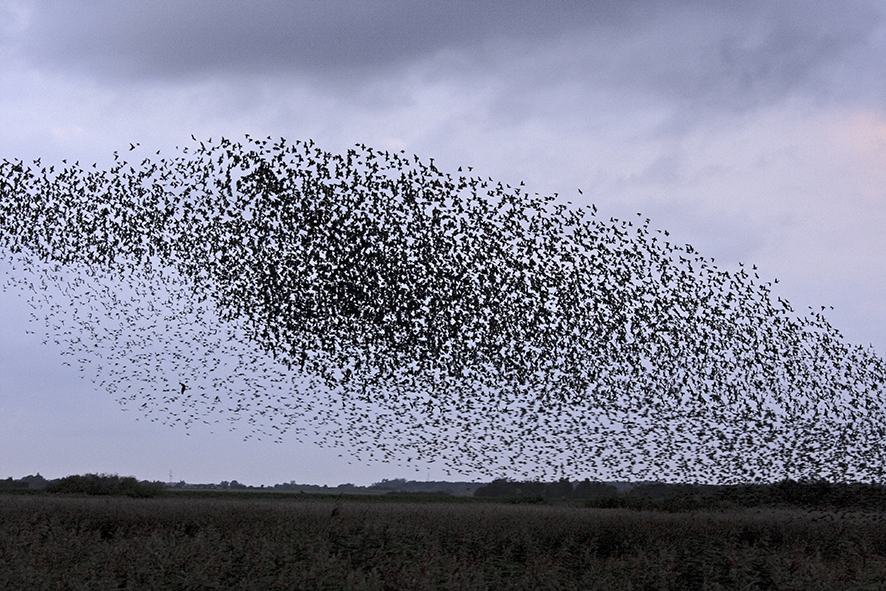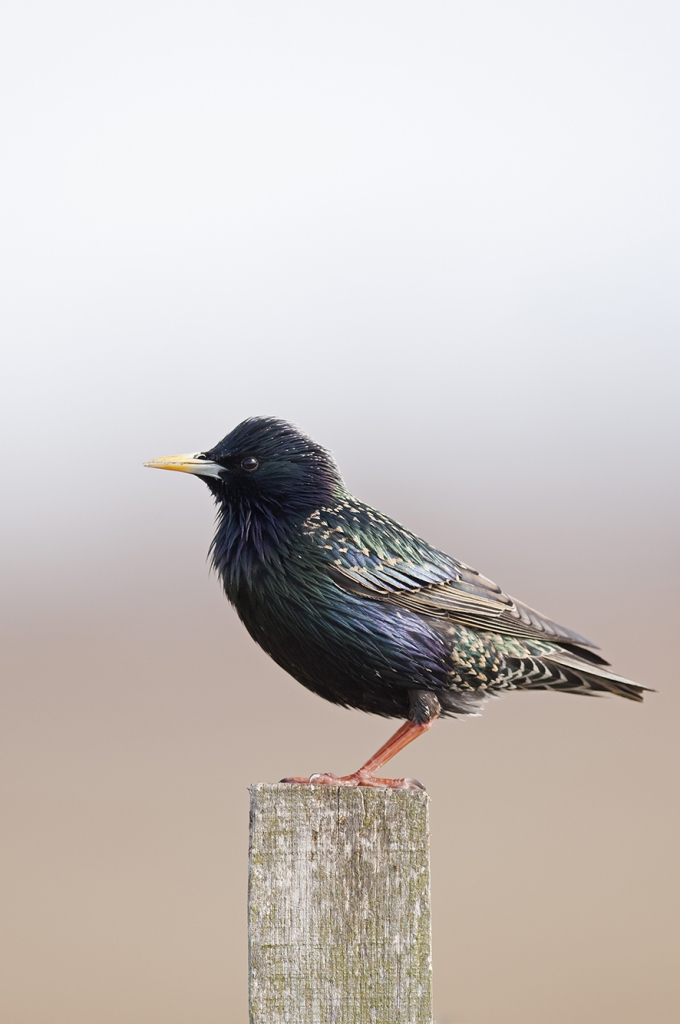Starling
- "Hear the little starling”
The starling is a real harbinger of spring that brings happiness when it lands at the starling box in spring and begins his song. The starling is good at imitating other birds' songs, which it mixes with his own chirping and clicking sounds. It can also imitate mobile phones ’different melodies and other sounds it hears often. Starlings have two voice sets and can sing with itself in two different voices.

Nest parasites and polygamy
Starlings breed in boxes or hollow trees. They can keep the vermin away from the nest by using wormwood and cowslip as a nesting material, which is regularly replaced throughout the incubation period. The starling male is a real ”Don Juan” who likes mating with several females. Like the cuckoo, the female may lay her eggs in another starling’s nest. Therefore the nest is guarded carefully and the female casts other eggs out of her nest before she starts laying eggs herself. If she lays her eggs in another bird’s nest, she may also remove an egg to make sure the numbers fit.
Black sun over the reed beds
In addition to its role as a harbinger of spring and singing star, the starling is probably best known for the phenomenon of ”Black Sun”. All year round, starlings prefer to stay overnight together in large flocks in the reed beds. Especially in spring and autumn, the large flocks of starlings perform spectacular dances at sunset. The large flock protects the individual starling from being attacked by birds of prey. If a bird of prey comes near the starling flock, the starlings accumulate in a dense and dark formation that covers up the sun. In reed bed areas in the boglands by the Wadden Sea, there are good opportunities to experience ”Black Sun”. In the marshland at Tøndermarsken, you can see starling flocks of up to 500,000 birds.
Facts
The starling is 21 cm long and has a wingspan of 37-42 cm. Its plumage is predominantly black, but in the summer it has a beautiful teal and purple metallic lustre with bright dots. In winter, its plumage is more brownish and the beak can also change colour from black in the winter to yellow in the summer. Starlings feed on worms, insects and snails, fruits and berries. It particularly finds its food on grazed pastures, meadows and gardens. Starlings are widespread in Europe, but breed in limited numbers in southern Europe. Although starlings are very common in Denmark, the population halved in the period 1976-2005.


